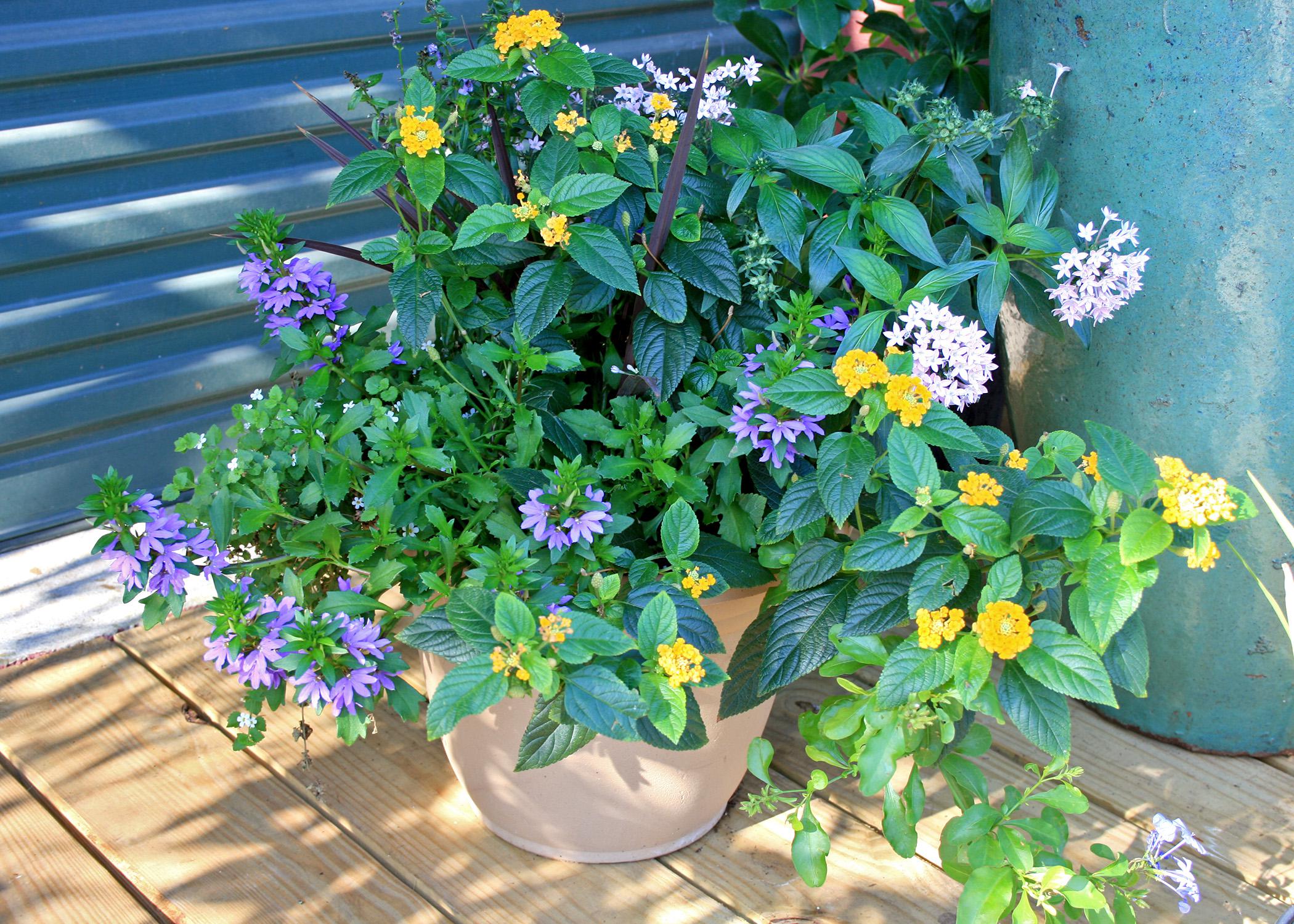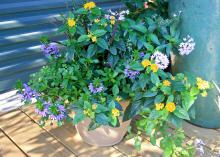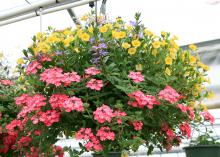Information Possibly Outdated
The information presented on this page was originally released on January 19, 2015. It may not be outdated, but please search our site for more current information. If you plan to quote or reference this information in a publication, please check with the Extension specialist or author before proceeding.
Time arrives to plan 2015 container gardens
Many gardeners have their sights on the garden and landscape at the beginning of this new year. The mailman is fueling this garden interest with all the seed and plant catalogs being delivered. I spent a recent weekend looking through the 18 catalogs I already had and have ordered all of the seeds for this year’s vegetable garden.
One of the easiest gardening activities to plan for 2015 is setting up combination containers. The most important aspect of growing in containers is using the correct “soil,” which is not soil at all. In fact, there is no soil in the correct growing media. If the bag says “garden soil,” that really means it is good for in-ground plants. Growing plants in containers requires a totally different kind of mix.
For the best growth and flowering performance in containers, use a soilless, peat-based mix. Bagged mixes for container plants are often called potting or container mixes and contain no soil. They are found under a variety of trade names but are similar in their basic recipes. They are composed of organic components like peat moss, coir fiber or bark. Potting mixes for containers need to be light and airy and drain well. This is why container mixes also contain vermiculite and perlite, inorganic components that are produced by heating mica or pumice.
These container mixes are readily available at local garden centers and come in a variety of bag sizes -- from quarts all the way up to multiple cubic feet. The selection of materials and bags can be confusing, so pay attention to the information printed on the bag.
The basic potting mix recipe can change depending on the type of plant being grown. Succulent plants and herbs generally prefer a mix that has a coarse texture and does not hold much moisture. Foliage and tropical plants typically like a finer mix that is well drained but holds a little more water. There are certified organic potting mixes. There are even bagged potting mixes that help to retain water and lower water usage. These potting mixes contain a resin or other material to provide for an optimum level of water retention.
Many commercial container potting mixes have some fertilizer mixed in, which is beneficial in getting plants off to a good start, but it can’t sustain growth through the entire season. I always feed my container plants with controlled-release fertilizer at planting and supplemental feeding with water-soluble fertilizer through the growing season.
When growing plants in containers, you don’t have to use a commercial mix. If you want try making your own potting mix, try this recipe: 70 percent peat moss or coir fiber and 30 percent vermiculite and/or perlite. You can adjust to fit your growing needs. Remember that the commercial bagged potting mixes are engineered so you can be successful with your container gardening.
Container gardening is a fun way to add color to your landscape, and using the correct growing media will go a long way to help you be successful.









